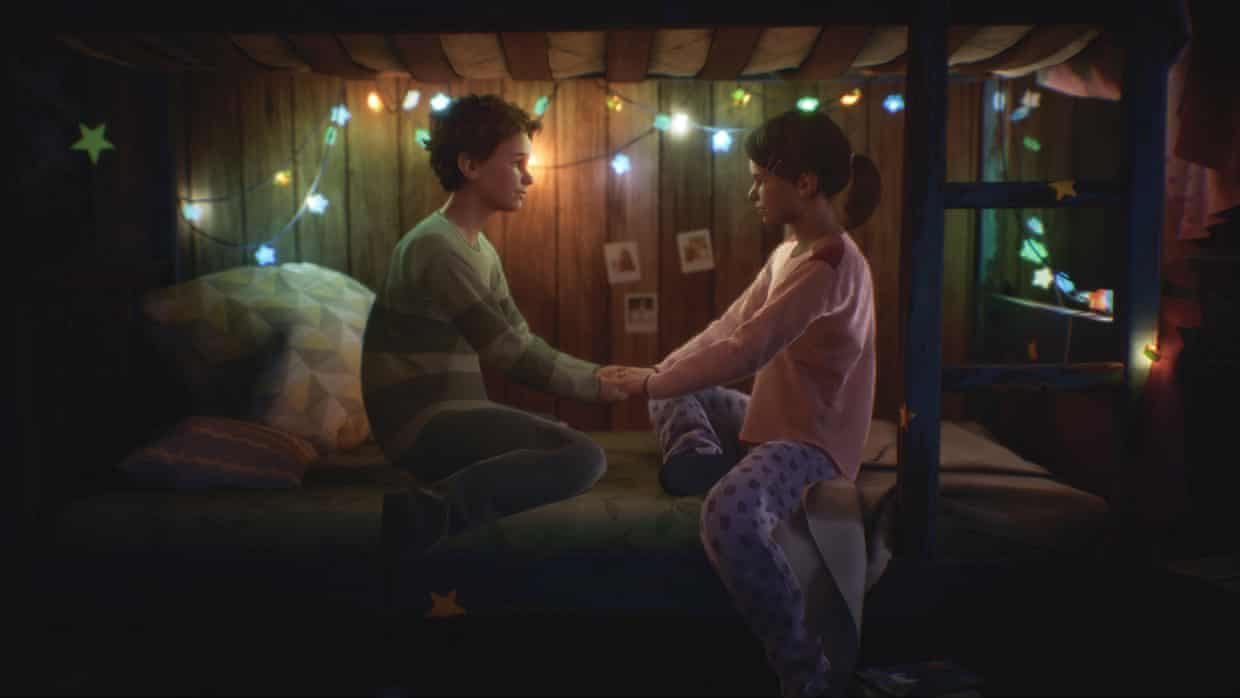
Games
Tell Me Why game review: a poetic exploration of memory against a stunning Alaskan landscape
Dontnod’s latest game is a thoughtful, atmospheric narrative adventure – and with its trans lead character, a defining moment for the industry
by Jinghua QianAs the first major studio game release to feature a trans lead character, Tell Me Why represents a pretty major milestone. The first two chapters of the narrative adventure game from Dontnod, the French developer behind the Life is Strange franchise, were released recently for Windows and Xbox One; the third and final chapter dropped last week.
You play as twins Alyson and Tyler Ronan, a cis woman and trans man (voiced by Erica Lindbeck and August Aiden Black, himself a trans guy). The siblings reunite after a decade apart to organise the sale of their family home in small-town Alaska. As they sift through the remains of their childhood, they also confront unanswered questions about the events that split up their family.
Dontnod is known for producing notably atmospheric narrative-driven games and Tell Me Why does not disappoint in this regard. As with the studio’s previous offerings in the Life is Strange series, this one is visually stunning, with a strong sense of place and rich subplots that make for a complex, textured narrative arc. The Alaskan landscape is breathtaking, and details such as footprints in the snow or exhalations hanging in the cold air are rendered perfectly. The exquisite animation makes every scene a delight to discover, and as with other exploration simulators like Gone Home, the audiovisual design feeds into the story, with every object or soundtrack adding to your understanding of the characters.

One notable highlight is the Book of Goblins, a codex of stories that the twins wrote with their mother when they were kids, which forms a sort of parallel fantasy world that also harbours clues for puzzles in the present day. Illustrator Florence Guittard has done a remarkable job with the whimsical fairytale imagery of the book, which is distinct from the rest of the game’s more cinematic aesthetic.
Dontnod’s Life is Strange series deals with sexual assault, immigration racism and police brutality, and Tell Me Why doesn’t shy away from real-world problems either, but here the storytelling feels more subtle and mature. There are a couple of moments where the characters are a little too emotionally upfront or verge on preachy, but it all goes towards building the story: after all, who among us has not been lectured by an ecologically minded young man about declining fish stocks? For the most part, the side narratives about Tlingit culture, environmental sustainability, queer Alaska and the juvenile justice system are genuinely interesting, and they also help situate the siblings and their shared trauma in a multidimensional world. Not everything is about them or their goals, and Tyler being trans is a formative part of his story but not the sum of his character.

As with Life is Strange, the protagonists of Tell Me Why wield a supernatural power – in this case, it’s a telepathic bond that also enables them to access vivid shared memories as well as conflicting ones. The game mechanism draws on the idea of unreliable memory as you choose whose version of events to believe while you dig into the family’s backstory. Your job is both to unravel the mystery, and to decide the twins’ future: your choices matter not only because they determine what happens next in a choose-your-own-adventure sense, but also they collectively govern the relationships that the twins have with each other and other townspeople – for example, the trust between the pair grows when they validate each other’s memories.
More action-oriented gamers might find this too meta, or a bit frustrating and underwhelming, but to me it’s a thoughtful set-up that suits the story. As identical twins who have gone separate ways, Tyler and Alyson are an obvious split mirror. Tyler’s transition is part of that, but so are countless other decisions: most of us have a running mental catalogue of the moments when our timeline seemed to bifurcate, when taking one path precluded taking another. Now and then you wonder how things might have been different, and whether you can even trust your recollection of the past.
Given that it has been five years since Dontnod released the first episode of Life is Strange, I’m surprised that these cinematic, story-rich games haven’t had a bigger effect on wider screen culture. For example, Black Mirror: Bandersnatch was released in 2018 to great fanfare as an “interactive film”, even though it felt thin on both story and choices compared with many narrative-driven games, with a lot of backtracking and a few abrupt endings. Netflix has since put out several other interactives, including one for sitcom Unbreakable Kimmy Schmidt, but as yet none come close to matching the emotional investment that games like Tell Me Why inspire. Instead, the decisions feel like a gimmick at best, and an interruption on the viewing experience at worst. I’m eager to see more media play with decision and consequence, whether it’s framed as a narrative game or an interactive film, especially if it’s as moving and magnificently crafted as Tell Me Why.
• Tell Me Why is out now on Windows and Xbox One